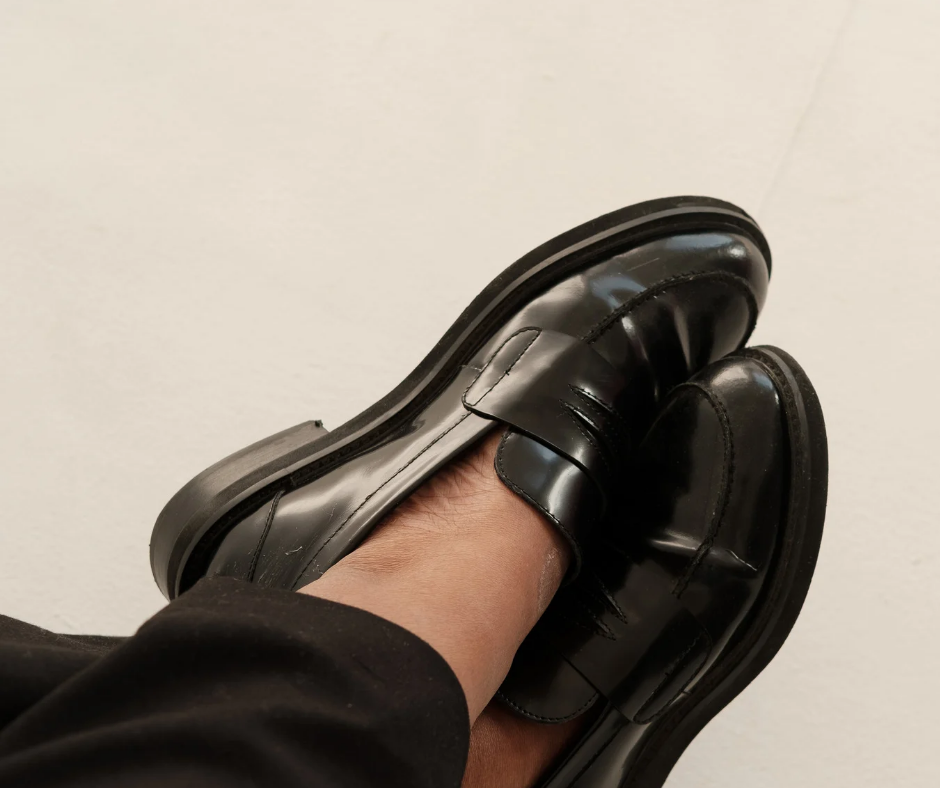5 Reasons Why Your Footwears Don’t Last

Most people wonder in pain and amusement after acquiring a much admired shoe, sandals, flipflop (palm slippers), bags, sneakers and it rips off after a short period of time. I have heard victims of this ill-fated experience suggest what could have happened.
I heard one saying “The palm slippers I got from the vendor you referred to me lack quality”.
This and many other claims are mere suggestions as only a professional can accurately tell you the actual reason why the leather material or related to it is peeling or ripping off. Meanwhile, we are not throwing out the suggestion that the quality of materials are to be questioned at times. All we’re saying here is that there are other cogent factors to be considered before drawing a conclusion to what actually went wrong with the leatherwork.
As such, highlighted herein are 5 undoubted reasons why your footwear or bags could ripoff after a brief use:
Leather versus Linning
There is a major misconception that people refer to lining material as leather, meanwhile, there is a calculated difference between them. Leather is a natural material (often harvested from animals) hence they are later refined with modern technological machines into desired patterns and colours. These patterns may include, dots, shiny face (wet-loose), dull face patterns(nubuck) and so on.
Linning on the other hand is pure chemical production aided by some sort of fabric material. They look so much like real leather but they are not.
Now, there are productions made with lining (bags, shoes, belts, sandals and palm slippers) that cannot stand the test of time like those made with leather. Don’t get it wrong; because a sandal is made with a lining material does not mean it’s of lesser quality. What it means is that there are precautionary measures to be considered once you choose to buy them. For instance, female heels are mostly made with linning materials which implies that they should be kept away from heat at 120⁰F. At this stage, a lining material will not only dry off and shrink in size, but it will also fade out and start to peel. Real leather under the same weather conditions will only shrink and probably lose its adhesive quality but will never peel.
Adhesive Formula
Most footwears are made with chemicalised adhesive fluids. These adhesives are determined by a shoemaker as it is rubbed on two different surfaces (the shoe sole and the insole). The popular formula for glueing two different sides in shoemaking is the far edge filling and gumming. This means that the entire surface is not involved in the glueing process, but just the edges around the shoe circumference.
As such, if a tiny part of the shoe edge opens, it quickly affects all parts of the shoe rendering it useless. This particular adhesive formula is popular among mass-production producers and this is the more reason why handmade shoes, bags, slippers and belts pay off afterall.
Mass Production Error
A mass production shoe-making team has a target of producing en-mass but the speed of production oftentimes affects the durability of a certain percentage of the production. Sometimes, you end up buying one of these shoes, bags or belts that are not properly done.
If you get unlucky and you end up with a badly crafted shoe, you may not identify its error because some production errors are not easily identified until you use them for a while and they mess you up. Other than that, you can call attention of the retailer for an exchange.
Mass production error above 1.5% is considered very harmful for a shoe-making business as it grossly affects the turnout of returning customers as well as referrals.
Ignorant Factor
Some ignorant shoe treatments are major factors that contribute to the wear and tear of our leather works. These treatments include:
- Frequent Exposure of Shoes or Other Leather Works to Water: Remember that footwear is fastened together with adhesives. Now, when you expose your footwear to water, in no time starts ripping off as the water weakens the glue.
- Wrong or No Polish: Every leatherwork has a unique colour pertinent to it. This implies that every leather must be polished frequently so that its unique and aesthetic features can be seen. Some belt users for instance care less about polishing them and when their colour fades out, they blame it on the manufacturer. When last did you polish your belt? Also, some make the mistake of using the wrong kind of Polish for a different leather. For example, using a wax polish on suede leather will only damage it. Hence you should use a liquid spray polish.
- Unprofessional Repair: When your leather work develops a minor fault shortly after purchase and you feel it’s not worth returning to the retailer because it’s something you can easily fix; always endeavour to give the repairs to a cobbler who is good at what he does. One of the reasons why some leatherwork can’t stand the test of time is because they were given out for repair to a quack or done ‘by myself’ thereby leading to unexpected damage.
Cheap Product:
Before you yell out at the manufacturer of a certain leather work for an average or poor quality of production, you need to strictly consider the cost at which you acquired that product. Some shoes are valued at #100,000 while some are valued at #7,000. As such, do you expect the same quality of materials? One person will have more value for money than the other. Hence, don’t buy a cheap product and expect the manufacturer to spend the exact amount of money you paid on producing it.
Meanwhile, if you wish to start a journey of purchasing quality leather works, I know a page not far from here that I can and will recommend. I bet you’ll thank me later…
Visit babawise.ng and take a glance through…
